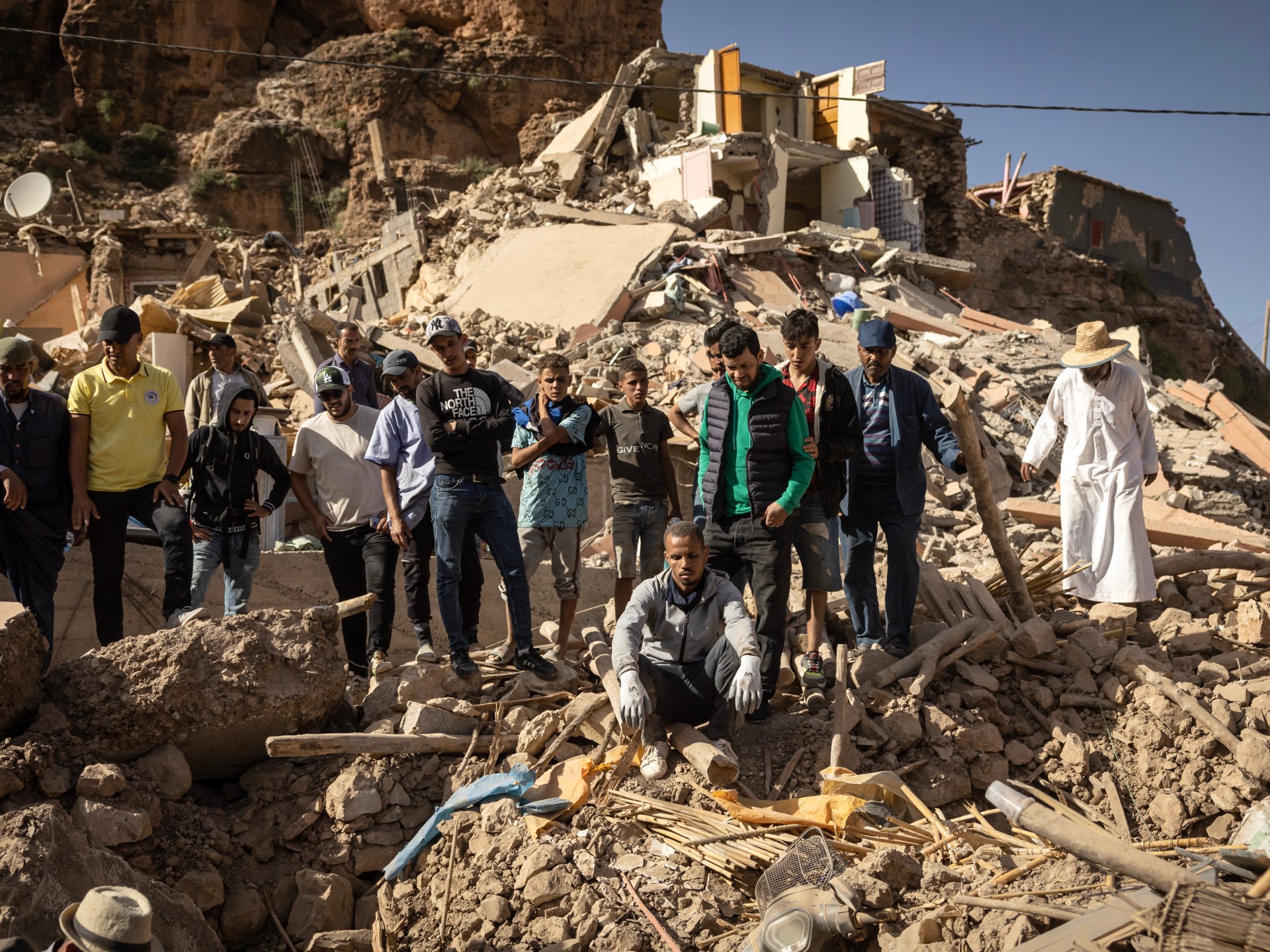The magnitude 6.8 earthquake that hit Morocco last week was a rare occurrence.
It was the deadliest the country has experienced in more than 60 years. At least 2,681 people were killed and more than 2,501 injured.
Earthquakes are commonly caused along the seam where two tectonic plates move against each other, and in Morocco, earthquakes mostly happen where the Africa and Eurasia plates meet.
But that boundary is to the north, near Gibraltar, so tremors are usually closer to Tangiers than Marrakesh. Yet this one was in al-Haouz province in the High Atlas Mountains, 75km (47 miles) southwest of Marrakesh, the country’s fourth-largest city.
So how bad was this “strong” earthquake, how rare was it and what exactly caused it?
What caused the earthquake?
So far, the explanation is that the quake happened when a reverse fault – where the edge of the rock on one side of a fault slips under the other – occurred between the Morocco and Iberia microplates, which are both part of the larger African plate.
Paula Marques Figueiredo, a geologist who researches active tectonics and neotectonics, said that reverse tectonic faults lay to the north of the Atlas Mountains and dipped towards them at one point.
During the earthquake, the edge that lies towards the mountains slid over the other, pushing the mountainside up, a knock-on consequence of built-up tension between the African and Eurasia plates over time.
“The faults can only hold the stress so much, and once in a while [thousands of years], an earthquake happens as a mechanism to release the [built-up] stress,” she said.
Seismologist Remy Bossu said the most likely scenario now is that there will be aftershocks for weeks before seismic activity levels return to normal.
“The rate decreases with time. It doesn’t mean that the strongest aftershock cannot happen five or 10 days later. We don’t know that, but the frequency decreases with time,” he told Al Jazeera.

Mehdi Zare, a professor at the Tehran-based International Institute of Earthquake Engineering and Seismology, said the movement in the Earth’s crust was on two levels, one closer to the surface and one deeper down. The resulting slipping and folding is known as decollement (French for “to detach or peel from”).
“There is a shallow decollement surface at 1 to 4km [0.6 to 2.5 miles] in the tertiary layers and a deeper decollement in the middle crust at a depth of about 10 to 20km [6.2 to 12.4 miles] in this area,” he told Al Jazeera.
He added that given the depth of the earthquake, it was most likely that the decollements started at the deeper level and moved towards the surface.
How bad was it?
The quake left thousands of people homeless, forced many to evacuate and prompted authorities to declare three days of mourning.
Al-Haouz was the hardest hit area, but other provinces – including Ouarzazate, Azilal, Chichaoua and Taroudant – were also dealt significant blows. Some remote villages were wiped out completely, and rescue teams are facing challenges reaching others.
How rare was this earthquake?
This was the deadliest earthquake registered in Morocco since 1960 when a 5.8 quake struck Agadir.
That earthquake was of a relatively lower magnitude and much less intense, but it inflicted a high number of casualties due to conditions at the time, including the lower structural integrity of buildings.
It killed an estimated 12,000 to 15,000 people and made tens of thousands homeless.
Earthquakes with an intensity like Friday’s are rare in the region, with no magnitude 6.8 or higher event being recorded within 300km (186 miles) of the epicentre, according to the US Geological Survey.
Figueiredo said that mountains mean faultlines.
“Imagine you are pushing your fist against a wall. You will feel increasing pressure until you either break the wall or your hand will move up. This is a very simple analogy of why, in settings of tectonic convergence, you have mountains built through time.”
She added that the North Atlas fault is a complex fault system at least 100km (62 miles) long with several individual minor faults, which may not have all been mapped.
Given that significant quakes would happen thousands of years apart, she said, people living in the region may not sense that they are in a fault system and even geological evidence can be eroded over time.
